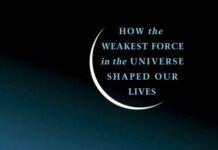
Ebook Info
- Published: 2007
- Number of pages: 310 pages
- Format: PDF
- File Size: 2.46 MB
- Authors: Brian Clegg
Description
PRAISE FOR LIGHT YEARS AND TIME TRAVEL”This immensely likeable work of pop science traces ‘man’s enduring fascination with light,’ from Aristotle’s plans for a death ray (burning enemy ships with a giant array of mirrors) to a recent experiment that seems to have sent Mozart’s 40th Symphony faster than light, and thus back through time. Clegg is very good at explaining the bizarre properties of light.”-The Guardian”A fascinating book on a fascinating subject. It brings together all aspects of light in an unusual and compelling manner.”-Sir Patrick Moore”Light’s properties often seem mysterious to the point of being unfathomable. Yet in this extraordinary book, Brian Clegg manages to explain them through the lives of those so fixated with light that they have shaped our perception of it. . . . Clegg’s accessible writing style manages to encapsulate the lives of light’s disciples with humorous and interesting anecdotes . . . quite awesome!” -New Scientist
User’s Reviews
Reviews from Amazon users which were colected at the time this book was published on the website:
⭐Written in an easy, flowing style, Mr.Clegg’s book is full of interesting and apposite facts about light and the people who gave us the basis of our current understanding. A master storyteller, he does not pontificate or try to blind the reader with science, rather, he opens our eyes to the possibilities afforded by that science – describing it all in layman’s terms, but definitely not patronising or ‘dumbing-down’.The first chapter is a taster of the future potential of experimentation with light, outlining some tremendous possibilities. Then we are treated to an overview of the perception of light by the ancients, whose theories were taken as gospel during the Dark Ages and only began to be questioned in the Middle Ages – but even then heresy loomed large for anyone trying to usurp the accepted ‘facts’.Continuing, potted biographies of the greats of science; Bacon, Davinci, Galileo, Descartes, Newton et al, give us a clearer picture of the problems that the new wave of scientists faced.Then we get into the meat of the problem – what is light made of? (which is still not fully answered). Fascinating insights into recent and modern theory and fact leaves one’s mind boggling, trying to contain the concepts, speeds and distances involved.Immensely readable, I encourage anyone with even a passing interest in light, science or history to read this book – they will be rewarded by a new persective of the world.As further reading, I also recommend ‘Unweaving the Rainbow’ by Richard Dawkins.*****.
⭐.In our book stores there has been has a dramatic increase in shelf space dedicated to pop-science books in the last few years. “Light Years and Time Travel” is very typical of the genre. There’s no math to frighten the innumerate and everything is written in challenge-free language. The average tabloid newspaper browser with the reading age of a 12-year-old would be comfortable with this book.The scope of this book could not be broader. It’s “everything you want to know about light”, written from a historical perspective. It takes us from the wisdom of the ancients, through the insights of Galileo and Newton and ultimately to the exciting possibilities of our post-Einsteinian world. With all this ground to cover, Brain Clegg never really attempts to penetrate or take his topic apart, but rather he just skates around the surface. With his lightweight journalistic style, he sees his role as closer to entertainer rather than educator. There is no serious attempt at elucidation (shedding of light) beyond a feint, superficial illumination.The structure of the book is in the form of a chronological series of potted biographies of the great luminaries. The author obviously found himself a “Boy’s Own Bumper Book” of amazing scientific history and strung together all the references he could find on light and optics. It’s very formulaic and it shows. There’s not an original insight, in sight.It is acknowledged that there is a well-deserved place for popular science books in the market place. The real test of their effectiveness is their ability to build a reader’s curiosity and to generate a desire to explore a subject in more depth. Instead, after reading this book, you feel bloated as if you have just ingested a big bucket of popcorn. It’s all sugar coated literary carbohydrate. Your appetite for the science of optics is blunted, but not satisfied, just like at the movies, you are still in the dark, and the lights have yet to come up.When considering this book claims to explore the possibility of time travel (as promised by the title), we have to work our way to the last few chapters before the strange world of quantum phenomena is even touched on.We get a few titillating references to some recent breakthroughs in “superluminary” phenomena but it is all very tentative and less than convincing. The author would have been better of giving us more details on well -established quantum phenomena and its applications in (opto-) photo-electronic technology.He gives us a few words on lasers and holograms, but the amazing world of semiconductors and the related field of photonic devices such as LEDs which are now so commonplace, is barely touched. He tantalizes us with the implications of entangled photons, and what that might mean for Star Trek-like teleporting, but the exciting breakthroughs that are happening in the world of quantum computing are not even hinted at.While it is great to see more books targeting that growing audience which wants to learn more about science, books such as this one doesn’t venture further than a typical Readers Digest article or Discovery Channel program. To his credit, Brain Clegg gives Richard Feynman (one of the greatest scientists and communicators of the 20th Century) rightful prominence in this book. However readers would be better off reading Feynman’s very accessible “QED:The Strange Theory of Light and matter”.It’s interesting to note that when this book was originally published last year (2001) in the UK it had the simpler title “Light Years”. For the North American market we got the addition of “… and Time Travel”. Crossing the Atlantic certainly involves some time travel, but you can be sure this book will never make it as an instruction manual for aspiring Captain James T. Kirks.
⭐I read this book on a flight back from the UK and it was fascinating. Well researched and with a compelling pace it takes the reader through the colorful back streets of philosophy and science as it struggles with the questions of light. In doing so the author brings together not only answers to what is light but ties it to time and life itself. A thoroughly enjoyable book for the casual student of history, science or life.
⭐If you’ve ever wondered about light – what it is, how it works -this is a great book. I love the historical approach, putting everything into context. The technical matter is wonderfully explained – it’s the first time I really felt I knew what relativity was about – and some of the future light technology is awesome. Read it.
Keywords
Free Download Light Years and Time Travel: An Exploration of Mankind’s Enduring Fascination with Light 1st Edition in PDF format
Light Years and Time Travel: An Exploration of Mankind’s Enduring Fascination with Light 1st Edition PDF Free Download
Download Light Years and Time Travel: An Exploration of Mankind’s Enduring Fascination with Light 1st Edition 2007 PDF Free
Light Years and Time Travel: An Exploration of Mankind’s Enduring Fascination with Light 1st Edition 2007 PDF Free Download
Download Light Years and Time Travel: An Exploration of Mankind’s Enduring Fascination with Light 1st Edition PDF
Free Download Ebook Light Years and Time Travel: An Exploration of Mankind’s Enduring Fascination with Light 1st Edition



